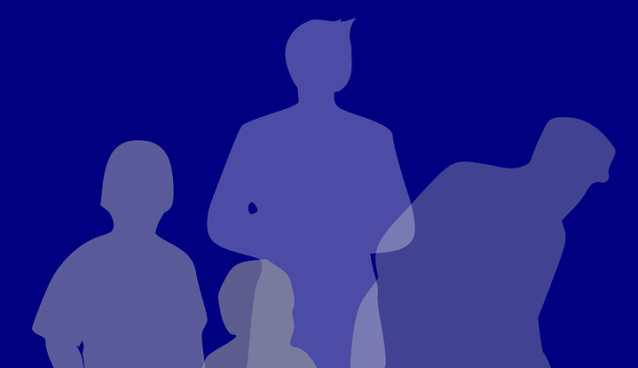Piaget’s Theory of Cognitive Development

Table of Contents
Introduction
Development is a continuous process ensuing multiple changes. Development means growth, adaptation and change over lifetime. Over the years a child acquires mastery of different types of skills more or less in a continuous manner and improved in quality and quantity. This is in essence the dynamics of learning. Learning is always on the move from rudimentary to higher and from simple to complex. Physical growth happens to be the most visible indices in the beginning, but gradually children demonstrate the acquired language skills, social skills and cognitive skills.
Cognitive Development
Cognition means to perceive, to comprehend, to conceive or simply to know. Cognitive development would then mean the growth and capability to knowing, comprehending or understanding which is facilitated both by maturity and interaction with the environment.
Cognition involves the ability to construct mental images involving thought, reasoning, memory and language. And mental images are constructed by an individual as the surroundings are observed, understood and internalised as a mental process.
Factors facilitating cognitive development
Following are factors which facilitates the cognitive development :
- Internal Readiness
- Environmental Experience
- Social Experience
- Equilibration
Piaget’s View on Cognitive Development
Jean Piaget, prominent Swiss psychologist has immensely contributed to the understanding of children’s cognitive development. He observed children over a period of years and noted that human behaviour is an act of adaptation to the physical environment.
According to Piaget, cognitive development of a person takes place by ‘constant interaction’ with his physical and social environment. The process of cognitive development proceeds through an orderly sequence of stages.
Piaget’s Cognitive Theory
To describe and to understand the cognitive development of a child, Piaget stated some ideas, concepts and processes.
There are four processes through which a child learns and grow :
- Schemas
- Assimilation
- Accommodation
- Equilibration
Schemas
According to Piaget, the human baby is born with certain fundamental instincts and reflexes such as sucking, looking and grasping. And these inborn traits make him perform related tasks. The cognitive abilities related to the performing of such tasks are termed “schemas” by Piaget. Schemas (plural is schemata) in child help him ‘to decide’ how he/she respond to the stimuli present present in his/her physical or social environment. Schemas or mental structures helps the child to adapt to and organize their environment.
At birth very few schemata are formed to organize the experience. Piaget suggested that the organisation of the new experience into schemata occurs through the processes of assimilation and accommodation.
Assimilation
Assimilation is the process through which a child makes sense of experiences and perceptions by fitting them into the existing cognitive structures (schemata). In simple words, it means incorporating old ideas with new ideas. A child who is familiar with certain idea will adapt to the new experience by adding information to the existing knowledge (schemata).
In classroom, when teachers introduce new concepts they try to facilitate the process of assimilation by linking these concepts with already existing knowledge (schemata).
Children gradually learn to differentiate between experiences and the process of assimilation may not be operating any more and children proceed towards the process of accommodation.
Accommodation
When the process of assimilation is not working any more because the new experiences do not fit into any of the existing schemata, a new schemata will have to be developed to adapt to the new experience. This process of creating a new schema is called accommodation. In simple words, accommodation means adjustment to new situations.
As the children go through varied experiences and encounter new stimuli they develop the ability to create numerous schemata that are more complex and increasingly different from each other. Here, comes the process of equilibration.
Equilibration
According to Piaget, assimilation and accommodation are two critical processes in cognitive does the be development and here, the process of equilibration does the balancing act between them. Equilibration is the process of learning that occurs when the processes of assimilation and accommodation interacts.
Stages of Cognitive Development
During the research, Piaget found that children shows consistency in their thinking patterns within broad age ranges, which are characterized as Stages. Piaget observed that the stages are distinct and qualitatively different from each other. Based on his findings, Piaget proposed four main stages of cognitive development.
- Sensorimotor Stage (Age 0-2 years)
- Pre-operational Stage (Age 2-7 years)
- Concrete Operations Stage (Age 7-11 years)
- Formal Operations Stage (Age 11-16 years)
Sensorimotor Stage (Age 0-2 years)
Type of Thinking : Sensorimotor
The sensorimotor stage is characterized by –
- Absence of language and limited to the child’s direct sensory and motor for interaction with his environment.
- Child acquires the concept of object permanence, the realisation that people and objects exists even when they are out of sight.
Pre-operational Stage (Age 2-7 years)
Type of Thinking : Trans-ductive Thinking, Intuitive Thought
At the pre-operational stage –
- Child’s direct action in the form of sensory or motor explorations is replaced by ‘Words’, symbolic representations.
- Thought process displays high degree of ‘egocentrism’ or inability to consider other’s point of view.
Concrete Operations Stage (Age 7-11 years)
Type of Thinking : Inductive Thought
During concrete operations stage :
- Children begin to think logically.
- But unable to think in abstract terms
- Thought process are limited to concrete objects and events.
- Child’s is able to develop concepts of size and shape of objects.
- Child can arrange objects into classes and sub-classes.
- They are able to understand number, classification and conversion.
Formal Operations Stage (Age 11 years onwards)
Type of Thinking : Deductive Thinking, Idealistic Thinking
During formal operations stage :
- Child is able to think abstractly.
- Deal with problems that are not physically present in their environment.
- Thought process becomes logical, systematic and well-integrated.
- Child can generalise situations.
- Child can transfer understanding from one situation to another situation.
Piaget’s theory demonstrates that there are regular patterns in cognitive development which are experienced by all children.



